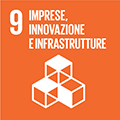- Docente: Alessandro Gabrielli
- Crediti formativi: 6
- SSD: FIS/01
- Lingua di insegnamento: Inglese
- Moduli: Alessandro Gabrielli (Modulo 1) Nicolò Tosi (Modulo 2)
- Modalità didattica: Convenzionale - Lezioni in presenza (Modulo 1) Convenzionale - Lezioni in presenza (Modulo 2)
- Campus: Bologna
- Corso: Laurea Magistrale in Physics (cod. 9245)
-
Orario delle lezioni (Modulo 1)
dal 24/02/2025 al 04/06/2025
Conoscenze e abilità da conseguire
At the end of the course, the student will learn modern methods to design electronic circuits for analog and digital signals coming from experimental apparata. He/she will also acquire knowledge of the technological processes that are the basis of digital integrated circuits. In particular, in the laboratory sessions he/she will be able to design circuits with analog components and discrete programmable digital circuits (FPGA) and verify their operation. Also, the student will possess the knowledge to design relatively complex electronic circuits for high-speed data acquisition systems. The student will finally participate to specific laboratory sessions dedicated to FPGA implementations of digital architectures and signal transmissions via high-speed electro/optical lines.
Contenuti
- The course provides the basic skills, in relation to modern methods of electronic design and processing analog and digital signals, to treat signals from devices used in experimental physics.
- Transistors
- Study of the n-channel and p-channel MOS and BJT transistors and their model for small signals. Study of configurations of Amplifiers with common drain and common source for the MOS, and common collector and emitter for the BJT.
- Study of Transmission Lines with Telegrapher's equations, constants and termination methods for good transmission of waveform.
- Basics of Frequency modulation.
- Basics of transformers and resonant transformers.
- Solutions for resonant circuits: the antenna principle.
- The principle and theory of the Tesla coil.
- Basics of Data Acquisition systems, Analog-to-Digital and Digital-to-Analog transformations. The Nyquist condition.
- Mathematical algorithms used in high-energy and nuclear physics for particle tracking, implemented in FPGA devices. The example of the Hough Transform.
- The laboratory session consists of a series of analog an circuits demos that will be showed in the classroom. Particular emphasis will be paid to the digital programming pf commercial FPGAs (Xilinx families).
- Mini-Tesla coil will be studied, simulated and shown in a lab session.
GENERAL CONTENTS
APPLICATIONS
LABORATORY EXAMPLES
Testi/Bibliografia
The course will be provided with the slides of the lessons
- L. Ricci, A. Perinelli, M. Prevedelli - The Physics Behind Electronics - Springer 2024
Metodi didattici
The course is divided into two cycles of 24 hours of lessons.
- A set primarily geared towards analog electronics focused on high frequency amplifiers and circuits.
- A set focused primarily on frontier FPGA implementations. Digital high frequencies, synchronization and reading processes will be covered.
- Each student will be shown some laboratory experiences.
Modalità di verifica e valutazione dell'apprendimento
The overall evaluation consists in either in a:
- oral evaluation on all matters of the course
or
- a project/design made by the student according the the professor
Strumenti a supporto della didattica
Students will have the transparencies related to topics covered in the course and the material covered during the laboratory experiments.
Orario di ricevimento
Consulta il sito web di Alessandro Gabrielli
Consulta il sito web di Nicolò Tosi
SDGs


L'insegnamento contribuisce al perseguimento degli Obiettivi di Sviluppo Sostenibile dell'Agenda 2030 dell'ONU.
